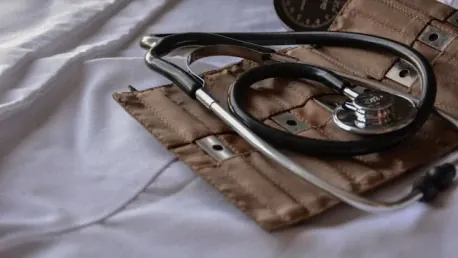Imagine a scenario where a catastrophic natural disaster strikes a remote area, completely severing access to traditional healthcare facilities and challenging the ability of healthcare workers to provide immediate and critical medical care. In this context, the fundamental role of portable medical systems cannot be overstated, as they are pivotal in offering swift and efficient medical aid during emergencies, natural disasters, and military operations, especially in hard-to-reach and tactically challenging environments.
Portable medical systems are indispensable during emergencies, as they enable healthcare professionals to deliver immediate care even when conventional medical infrastructure is unavailable. Among the key advancements in this area are portable ultrasound machines, which allow real-time imaging of injuries without needing a hospital setup, and handheld ECG devices, which monitor heart activity during patient transport. These innovations dramatically improve response times and patient outcomes by providing rapid assessments and continuous monitoring in difficult and remote settings.
Significant progress has also been made in the diagnostic tools used within portable medical systems. Point-of-care testing devices now offer quick results for various conditions, such as infections and blood sugar levels, in a matter of minutes. Portable blood analyzers play a crucial role too, as they swiftly measure critical indicators like blood gases and electrolytes. Moreover, integrating artificial intelligence (AI) into diagnostic devices has boosted efficiency by analyzing symptoms, suggesting potential diagnoses, and prioritizing treatments, all of which help in reducing errors and speeding up care.
Therapeutic portable devices have also seen remarkable advancements. Innovations such as automated external defibrillators (AEDs) and portable ventilators have become more compact, user-friendly, and reliable. Modern AEDs now include voice-guided instructions, making them accessible even to those without medical training. Meanwhile, lightweight and battery-operated portable ventilators provide essential respiratory support during power outages and in areas without electricity, proving especially invaluable during disaster situations.
Telemedicine technologies further enhance the effectiveness of portable medical systems. These technologies enable field healthcare providers to connect with specialists remotely, ensuring patients receive expert advice and accurate treatments. For instance, portable ultrasound devices can transmit imaging data to radiologists for prompt analysis, and wearable devices that monitor vital signs can send real-time alerts to medical teams, effectively bridging the gap between field care and the comprehensive services of a hospital.
Wearable technology plays a crucial role in field medicine by enabling real-time tracking of health metrics through smartwatches, biosensors, and smart clothing. These wearable devices help healthcare professionals detect health issues early and respond swiftly. For example, adhesive patches embedded with biosensors can monitor multiple health indicators simultaneously, providing a thorough overview of a patient’s condition, particularly useful during prolonged transports or field missions.
Despite these impressive advancements, portable medical systems still face significant challenges, such as power supply reliability and the need for devices that can endure extreme conditions. Development efforts are currently focused on creating solar-powered systems and extending battery life to address power issues, along with enhancing device durability through robust materials. Affordability also remains a vital concern, as making these advanced systems accessible to underserved communities is a top priority.
Looking toward the future, the outlook for portable medical systems is very promising. Innovations in AI and machine learning are set to further enhance diagnostic and predictive capabilities. Additionally, 3D printing technology could transform the on-site production of medical tools and spare parts, tackling supply chain issues effectively. Autonomous medical drones are also an exciting development, potentially delivering medical supplies, devices, and medications to places that are otherwise inaccessible, thus significantly improving response times and patient care in remote locations.
To conclude, portable medical systems are transforming field medicine by providing advanced diagnostic tools, therapeutic devices, and telemedicine solutions that save lives and improve healthcare delivery in challenging environments. Although there are challenges that need to be addressed, ongoing innovations are tackling these issues, making quality healthcare increasingly accessible regardless of location. Dr. Emily Carter, an expert in medical technology, emphasized that these advancements are driving the evolution of healthcare technology, particularly in portable and field-deployable systems.









